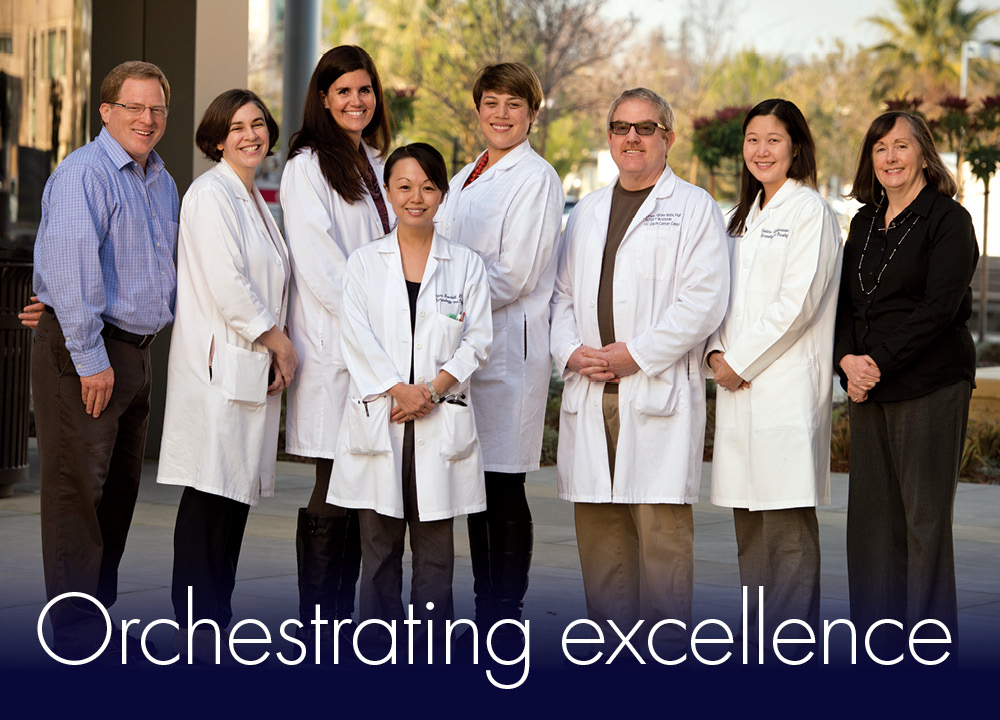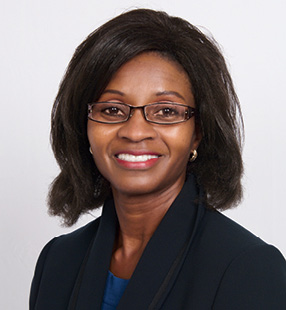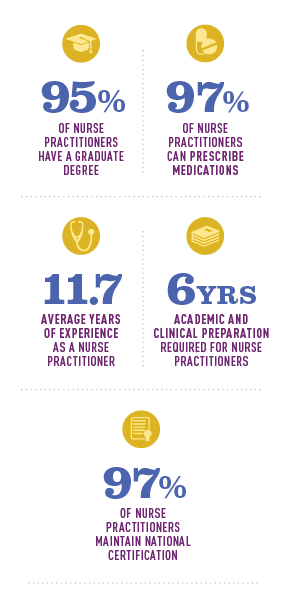
Nurse practitioners key players in cancer care
When Mafini Tupai was diagnosed with cancer she sought treatment at various cancer centers looking for the right combination of great medicine and great care. She finally arrived at UC Davis Comprehensive Cancer Center two years ago, and stayed.
A stage-IV breast cancer patient, she felt the providers at other centers had given up on her. It was different at UC Davis, where she said her oncologist, Kendra Hutchinson, “heard my story. I needed someone to fight this with me, and she was willing to do that.”
Hutchinson, however, is only part of Tupai’s cancer care team. At her monthly visit, Tupai also sees longtime nurse practitioner Lewis Ingram, who makes sure she is tolerating her immunotherapy and has her pain under control. Along with Hutchinson, Ingram also monitors Tupai and her laboratory tests for any changes in the disease progression.
“Lewis is a people person,” Tupai says. “He is very caring. He listens. He is very attentive. It’s like he’s a male version of Dr. Hutchinson. Even though she is my main doctor, I can trust Lewis to take care of me.”
Ingram is one of nine nurse practitioners taking care of UC Davis cancer patients. Each of them specializes in different cancer types and provides personalized care to patients at the time of diagnosis, during treatment and through survivorship. The involvement of nurse practitioners in the oncology setting, while not new, increasingly is seen as an important component of the cancer care team. These advanced-care nurses facilitate patient access to oncology care, extend the reach of oncologists and provide comprehensive care that improves quality of life for patients.
“It’s often said that medicine is like a team sport,” explains Ted Wun, UC Davis chief of Hematology and Oncology. “The physician may be the quarterback, but all players are vital to the success of the team. I prefer the metaphor of the orchestra; the physician as a conductor of many talented musicians — nurses, nurse practitioners, pharmacists, social workers and others. If everyone does their individual parts well, but in a coordinated fashion, there is beautiful music. In oncology that means outstanding, patient-centered care. But it takes a lot of teamwork and practice.”
The role of nurse practitioners in oncology care delivery is especially important now as incidence of the disease continues to grow with an aging population. The World Health Organization last spring reported that cancer is poised to become a global epidemic, with cases expected to jump 57 percent worldwide over the next 20 years, thereby increasing the demand for oncology services and potentially surpassing the supply of available oncologists.
The oncologist shortage is projected to grow as more providers retire and the demand for cancer diagnosis and care through survivorship increases. The number of cancer survivors alone is expected to surge to 18 million in the United States by 2022.
Cost effectiveness, therefore, is essential in ensuring access to care and better outcomes for patients.
“We increase the cost-effectiveness of care by preventing patients from being hospitalized,” says Laura Brennan, a nurse practitioner at the cancer center. “We watch them carefully and take care of things as they come up.”
Special credentials
Abimbola (Abby) Olusanya in surgical oncology decided to become a nurse practitioner because she wanted to contribute to patient care at an advanced nursing-practice level. That meant that she first needed a bachelor’s degree, followed by a master’s of science in nursing. She then became a certified family nurse practitioner, one of many types of role-specific nurse practitioner certifications. Olusanya also earned a doctorate in nursing.
At the cancer center, Olusanya sees patients before and after cancer surgery. She also coordinates surgical oncology research and often serves as a patient-care bridge between the rotations of resident physicians.
“As a nurse practitioner, I manage patients’ care in collaboration with the attending surgeon,” she says. “The best part of my job is seeing a patient go from being ill and frail to a vibrant and healthy individual who starts planning for life after retirement and/or living long-term. It is a great privilege to contribute to that process.”
Extending care provision
Brennan may be the first person contacted when a patient who has been seen in the clinic needs immediate advice or follow-up care. Like other nurse practitioners at the cancer center, she is especially skilled in caring for acutely ill cancer patients. She can quickly assess a patient’s need for a different type of therapy, including chemotherapy and radiation. Or she can arrange for hospitalization of a patient with respiratory distress due to complications of metastasis. She constantly consults with oncologists about individual patient needs.
Colleen Rohde, a registered nurse in the adult infusion center, says nurse practitioners help solve patient emergencies. She cites the time a new patient was getting a blood transfusion, developed a reaction and spiked a fever. Despite the patient being unable to take oral medications such as Tylenol, Rohde worked with nurse practitioner Christine Teklehaimanote to develop a plan to help the patient through the procedure.
“They are accessible and expedite patient care,” Rohde says. “Having them on the team has really streamlined our practice here.”
Brennan notes that nurse practitioners also bring a broader perspective to oncology care, taking on longer-term monitoring and medical management of patients, including care designed to keep the patient comfortable.
“Nurse practitioners manage the whole body, which includes palliative care, so we take all those things into consideration — pain, nutrition, nausea and other side effects of treatment,” she says. “We get to give them hope. We offer them treatment that we hope could extend their life, or allow them to meet a new granddaughter or go to their child’s wedding.”
With more people surviving cancer so comes a need to provide specialized post-treatment care and monitor for recurrences — a role well suited to nurse practitioners in both adult and pediatric clinics.
In the pediatric clinic, for example, nurse practitioner Kathryn Wells developed a special program to monitor young cancer survivors for short- and long-term side effects of cancer treatment that may occur years after treatment. These can include infertility, secondary cancers, emotional or educational problems, and growth and development concerns. The clinic utilizes a computer-based guide that helps Wells and other providers track adolescents and young adults as they transition to adulthood.
A matter of trust
While the presence of nurse practitioners in cancer clinics is becoming more common, not every patient is immediately comfortable with the care model. Even Mafini Tupai was admittedly skeptical, Ingram says.
“When we first met, she was very apprehensive about me and the health-care system,” he says. “But once I developed a relationship with her, she realized that we have her back, and we are watching over her very carefully.”
And that is exactly what Ingram intended when he went into the nursing field 16 years ago.
“I wanted to be able to affect patients’ lives in a positive way,” he says. “It’s a perfect profession for me because I wanted to help others.”


